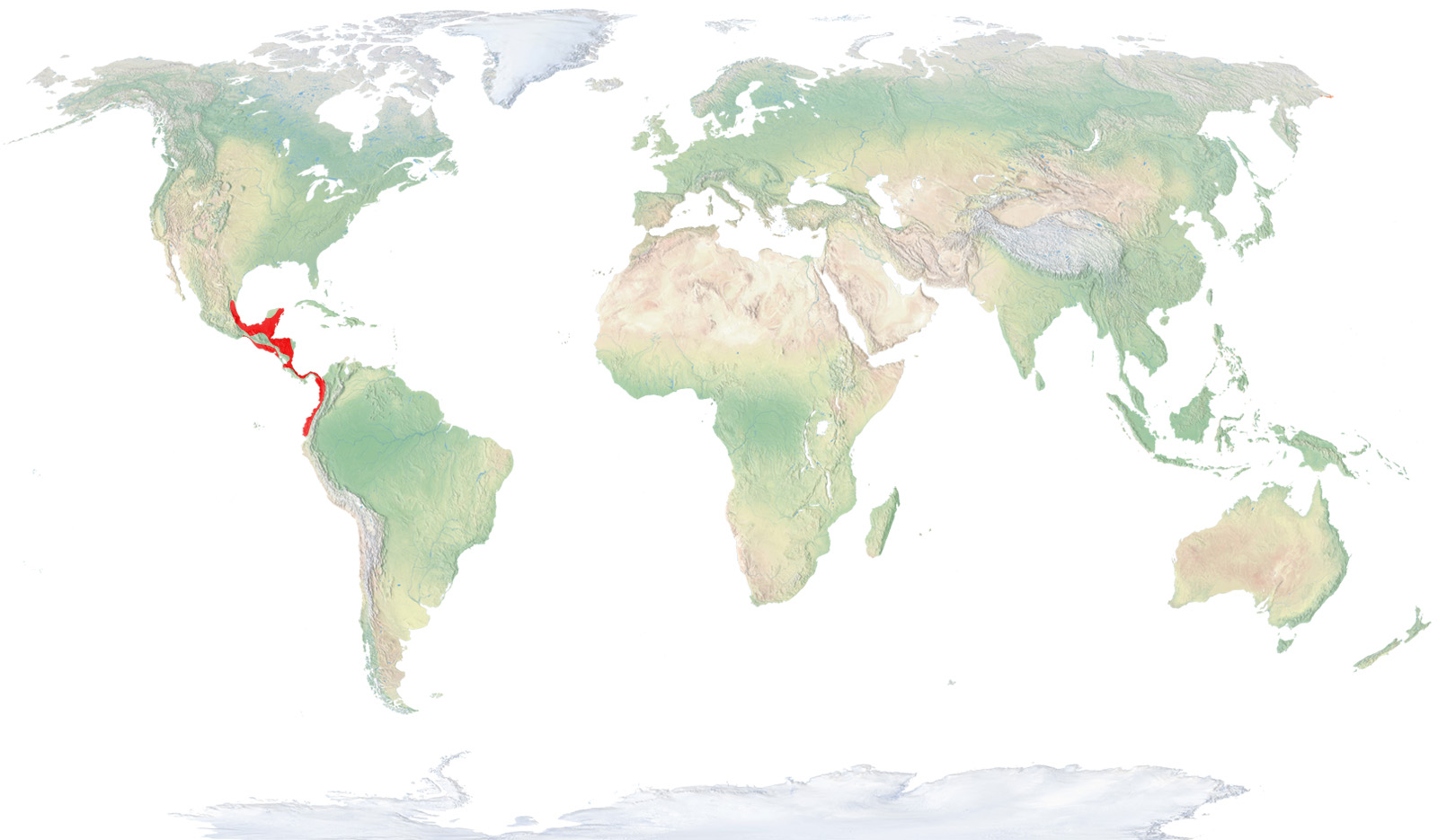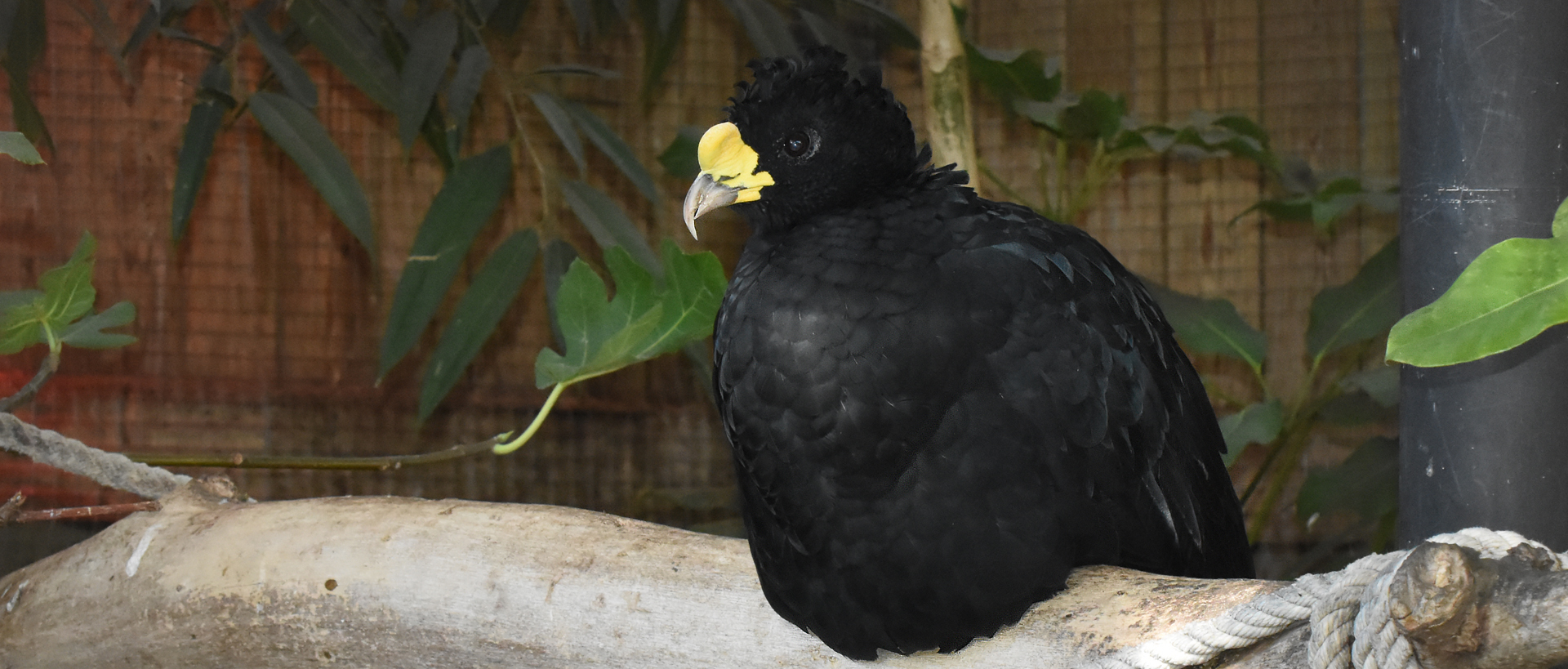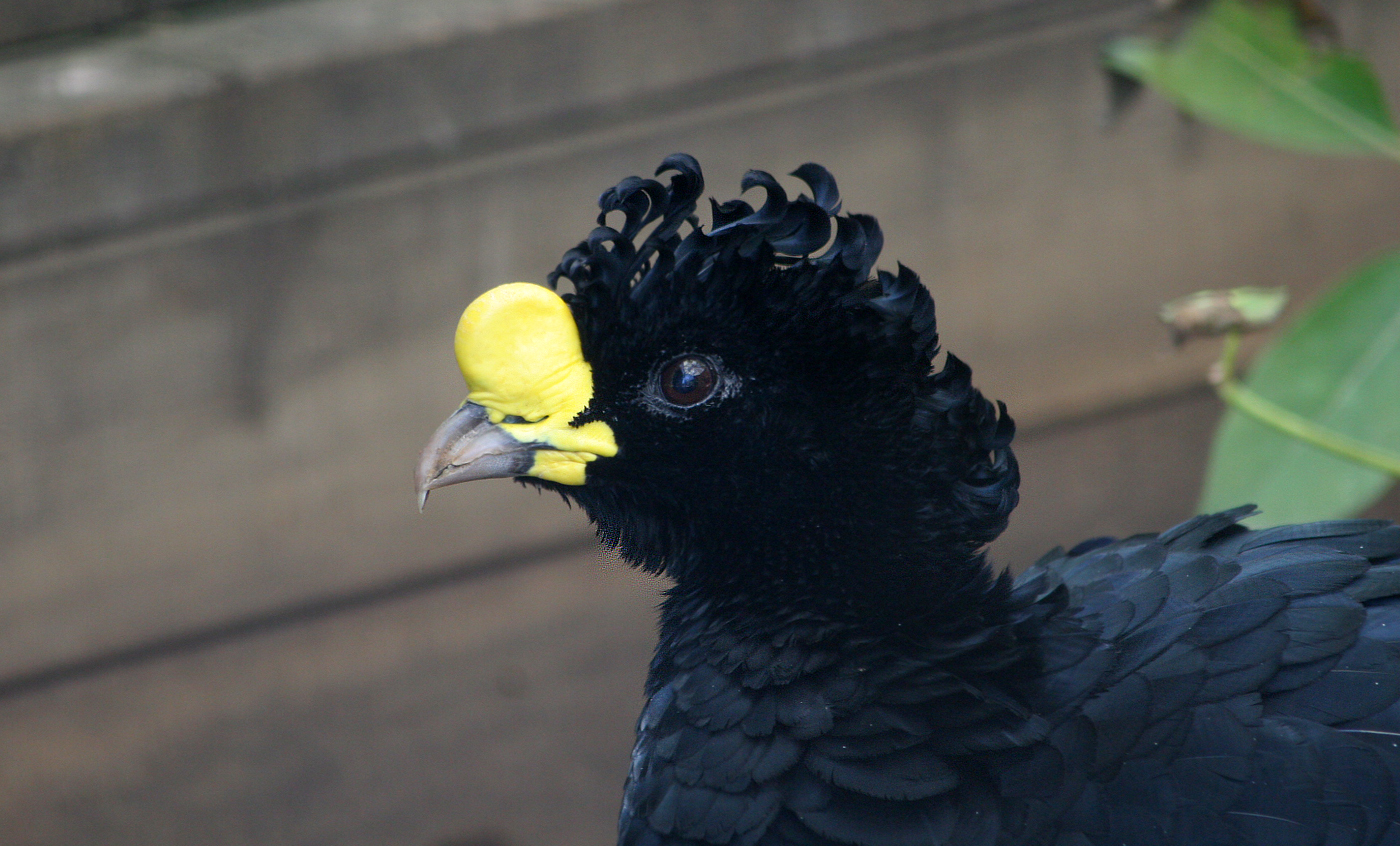Great curassow
This large forest-dwelling bird can weigh up to 5 kg and lives mainly on the ground, in a wide area covering the east of Mexico to the west of Colombia and Ecuador.
They live in pairs or small family groups during the breeding season. The destruction of their habitat and hunting means that today they are only found in the more remote areas of their range.
Natural habit
From eastern Mexico to western Colombia and Ecuador.

- Distribution / Resident
- Breeding
- Wintering
- Subspecies
Risk level
- Extint
- Extint in the wild
- Critically endangered
- In Danger
- Vulnerable
- Near threatened
- Minor concern
- Insufficient data
- Not evaluated
Taxonomy
Physical characteristics
Biology
Reproduction
Biology
This large forest bird, which can weigh nearly five kg with primarily terrestrial habits, has marked sexual dimorphism, as males have black plumage and a large yellow knob at the base of their bill, while females are reddish coloured on their underbellies and wings, with striking striped plumage on their head, neck and dorsal, which runs to the tip of the tail.
It inhabits tropical rainforests in an extensive area running from southern Mexico to western Colombia and Ecuador.
They feed on seeds, fruits, tender shoots and different types of small animals they find on the jungle floor.
With solitary customs, it lives in pairs or small family groups during the reproduction period. It builds a basket like nest with branches, leaves and a variety of plant matter, in which it lays two white eggs that are incubated from 28 to 32 days. This species’ behaviour is very odd, as it builds several nests, but only completes the one it ends up using.
Sedentary, although in some spots of its distribution area it can make short movements, especially during the dry season.
The destruction of their habitat and overhunting have led to their only being one bird common to the most remote regions of their area of distribution. The rest are considered vulnerable with a negative outlook.




